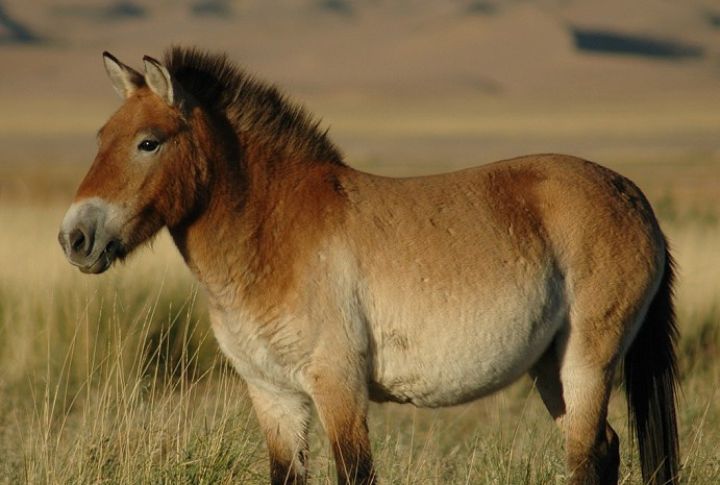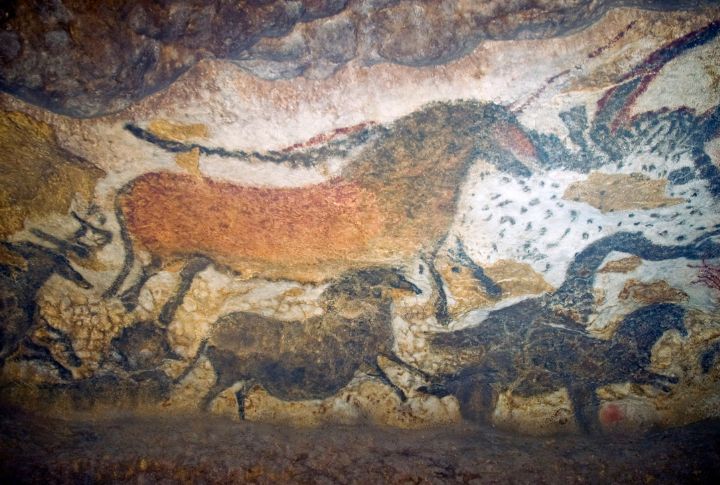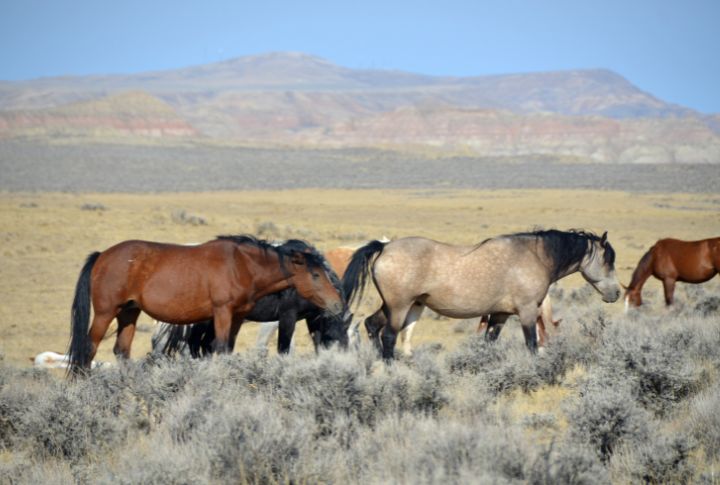
Wild horses have thundered across history, carrying stories of survival and untamed spirit. Their journey is one of evolution, where tiny, forest-dwelling ancestors became icons of freedom. Along the way, they shaped cultures and even sparked fierce debates about their place in modern ecosystems. So, here are 20 secrets about wild horses. Swipe to find more.
Tiny Ancestors of Modern Horses

Wild horses weren’t always the size we know today. Around 50 million years ago, their earliest ancestors were the size of small dogs! These ancient horses, like Eohippus, also called the “dawn horse,” stood about 12-20 inches tall and weighed less than 50 pounds. Unlike modern horses, they had toes instead of hooves.
The Mass Extinction That Erased Them

These horses vanished from North America nearly 10,000 years ago during a mass extinction that also wiped out mammoths and saber-toothed cats. This disappearance was likely triggered by climate shifts and overhunting by humans. Without their reintroduction centuries later, the wild horse would’ve been just another ghost of prehistory.
The Mustangs’ Spanish Legacy

Mustangs owe their wild spirit to Spanish conquistadors who brought the first horses to the Americas in the 16th century. Known as “mestengo” in Spanish, meaning “stray,” these resilient animals escaped into the wilderness, forging herds that thrived in tough terrains. Plus, their endurance and adaptability trace back to Iberian breeds.
Przewalski’s Horse Is Truly Wild

Unlike mustangs, which descended from domesticated horses, Przewalski’s horse has never been tamed. Belonging to the steppes of Central Asia, these stocky, dun-colored animals are the only surviving truly wild horse species. Their reintroduction from captivity to Mongolia in the 1990s marked a triumph for conservationists worldwide.
Horses in Ancient Cave Art

Europe’s caves hold remarkable images of wild horses, painted 17,000 years ago by early humans. Found in places like Lascaux, France, these depictions show animals with thick necks and distinct patterns. Archaeologists believe these paintings weren’t just art—they were cultural expressions honoring wild horses’ presence in prehistoric life.
Plains Tribes Revolutionized by Horses

The reintroduction of horses revolutionized life for Native American tribes. By the 18th century, groups like the Comanche had become exceptional riders, reshaping hunting and warfare. Horses brought speed and power to buffalo hunts, while herds became symbols of wealth and status, further marking a new era in indigenous culture.
The Incredible Herd Numbers of the 1800s

Wild horses once roamed the American West in herds numbering over two million! These thriving populations spread from the Rocky Mountains to the Great Plains. However, by the 20th century, habitat encroachment and aggressive hunting reduced their numbers drastically, which sparked conservation movements to prevent their complete disappearance.
The Law That Saved Them

Signed into law in 1971, the Wild Free-Roaming Horses and Burros Act declared wild horses “living symbols of the historic and pioneer spirit of the West.” This landmark legislation protected them from slaughter and exploitation, ensuring their survival. Without it, mustangs might’ve been lost to history.
Environmental Benefits of Wild Horses

By grazing across vast areas, wild horses help maintain healthy ecosystems. They spread seeds, clear dead vegetation, and create habitats for smaller species. In areas like the Great Basin, scientists have found that these behaviors boost biodiversity. Hence, their role as ecosystem engineers often goes unappreciated but remains vital.
The Tarpan’s Tragic End

The Tarpan, a wild horse native to Europe, roamed for centuries. Sadly, human expansion pushed these horses to extinction. By the late 19th century, the Tarpan was gone from the wild, with the last known captive Tarpan dying in a Ukrainian zoo in 1909. However, efforts to “recreate” the Tarpan gave rise to breeds like the Konik horse.
Theodore Roosevelt’s Badlands Horses

During his time in the Badlands of North Dakota, Theodore Roosevelt developed a deep admiration for the wild horses roaming the region. These hardy mustangs became symbols of freedom and survival in the harsh Western region. Today, wild mustangs in the Badlands serve as living reminders of Roosevelt’s legacy and his love for the American West.
Survival Tactics in Harsh Climates

Wild horses are survival experts. In deserts, they dig into dry riverbeds to find hidden water, while in snowy climates, they brush away snow to uncover grass. Their thick winter coats protect against freezing temperatures and shed in warmer months to stay cool. Plus, herds work as a unit, with dominant stallions leading to safe grazing spots.
The Communication Secrets of Herds

A flick of the tail, a nip on the shoulder, or even ear movements—wild horses use a complex language of gestures to communicate. A dominant mare often leads, using body language like nudges or postures to guide the group. When threats arise, stallions emit sharp neighs or snorts to warn the herd, prompting a swift, unified response.
The Debate Over Herd Management

Managing wild horse populations remains controversial. While some advocate for their preservation, others argue that they overgraze and compete with livestock. Furthermore, programs like fertility control aim to balance populations without harming herds. Hence, the debate reflects broader tensions between conservation and land use priorities in the American West.
Mongolian Reverence for Horses

In Mongolia, wild horses are cultural icons. Known as the “takhi,” they represent strength and freedom in Mongolian folklore. Przewalski’s horses are especially revered, with conservationists working tirelessly to protect their dwindling numbers. Their presence on the steppe is a reminder of humanity’s deep bond with wild equines.
The Hollywood Mythos of Wild Horses

Few images are as exciting on screen as a wild horse galloping across open plains. In films like “The Misfits” and the animated “Spirit: Stallion of the Cimarron,” they’ve been immortalized as symbols of freedom and resilience. While Hollywood often dramatizes their lives, these portrayals have sparked fascination and awareness.
A Return to the Wild in Mongolia

Przewalski’s horses were once extinct in the wild, but captive breeding programs revived them. Released into Mongolia’s Hustai National Park, they’ve slowly reclaimed their natural habitat. Conservationists celebrate this as one of the greatest wildlife success stories, which proves that even the brink of vanishment isn’t insurmountable.
The Role of Stallions in Herd Protection

Stallions are the fearless guardians of wild horse herds, always on high alert for potential threats. Positioned at the herd’s edge, they keep watch, using sharp senses to detect predators. In danger, they’ll charge aggressively to defend the group. Basically, their leadership and bravery are important for the herd’s survival.
The Genetic Diversity of Mustangs

Mustangs are a genetic mosaic, tracing their lineage to Spanish horses brought to the Americas in the 16th century. Over centuries, they interbred with escaped domestic horses and draft breeds, which creates a diverse gene pool. This genetic variety has made them incredibly adaptable and also helps them thrive in environments.
The Fight for Their Future

Wild horses face uncertain futures, with threats ranging from habitat loss to culling programs. Conservationists are racing against time to secure protections and improve management practices. By supporting efforts like adoption programs and sustainable population controls, you can help preserve the legacy of these magnificent animals for generations.

